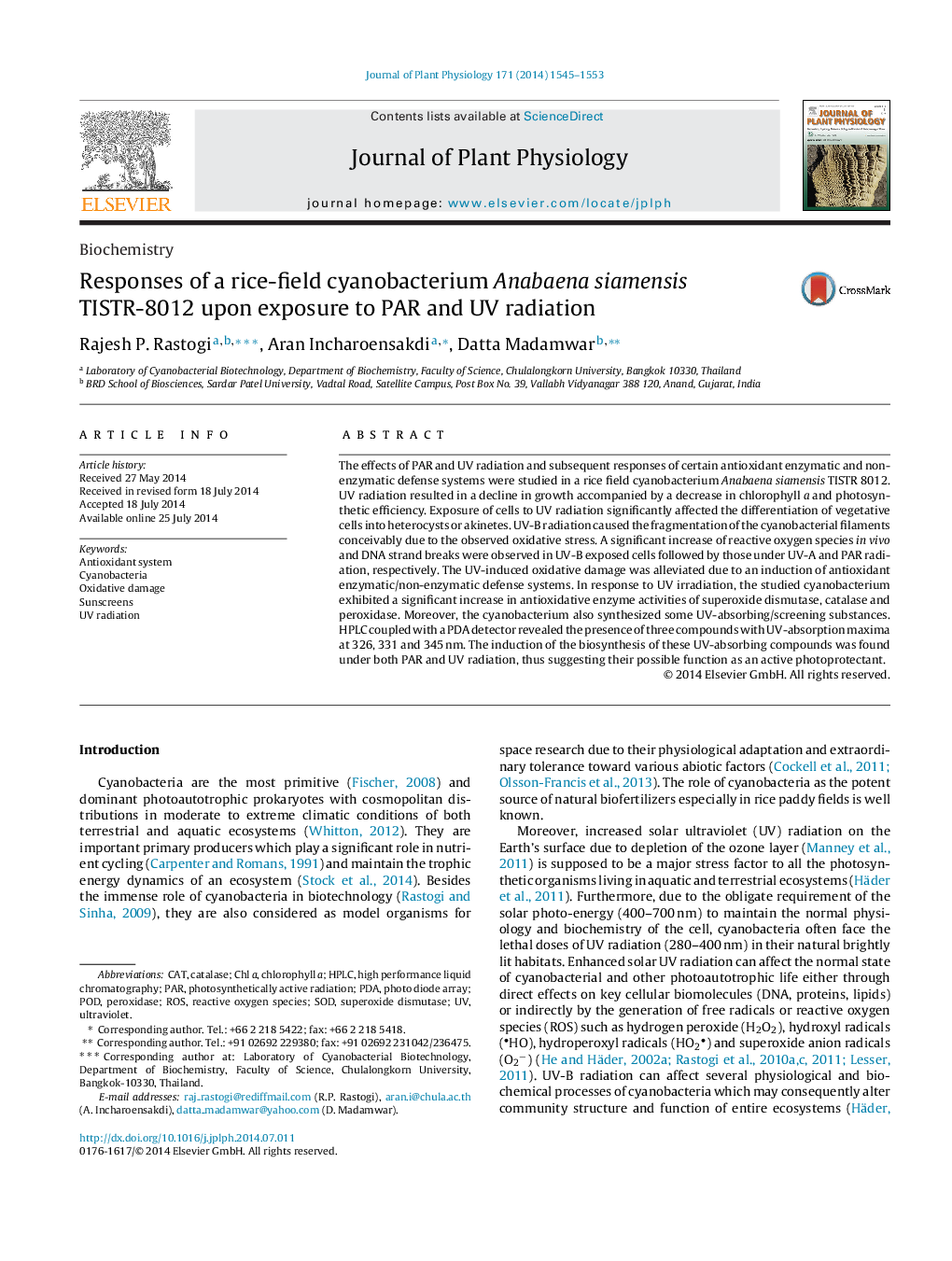| Article ID | Journal | Published Year | Pages | File Type |
|---|---|---|---|---|
| 2055803 | Journal of Plant Physiology | 2014 | 9 Pages |
The effects of PAR and UV radiation and subsequent responses of certain antioxidant enzymatic and non-enzymatic defense systems were studied in a rice field cyanobacterium Anabaena siamensis TISTR 8012. UV radiation resulted in a decline in growth accompanied by a decrease in chlorophyll a and photosynthetic efficiency. Exposure of cells to UV radiation significantly affected the differentiation of vegetative cells into heterocysts or akinetes. UV-B radiation caused the fragmentation of the cyanobacterial filaments conceivably due to the observed oxidative stress. A significant increase of reactive oxygen species in vivo and DNA strand breaks were observed in UV-B exposed cells followed by those under UV-A and PAR radiation, respectively. The UV-induced oxidative damage was alleviated due to an induction of antioxidant enzymatic/non-enzymatic defense systems. In response to UV irradiation, the studied cyanobacterium exhibited a significant increase in antioxidative enzyme activities of superoxide dismutase, catalase and peroxidase. Moreover, the cyanobacterium also synthesized some UV-absorbing/screening substances. HPLC coupled with a PDA detector revealed the presence of three compounds with UV-absorption maxima at 326, 331 and 345 nm. The induction of the biosynthesis of these UV-absorbing compounds was found under both PAR and UV radiation, thus suggesting their possible function as an active photoprotectant.
